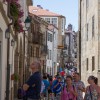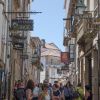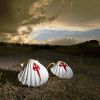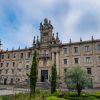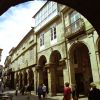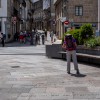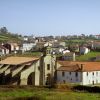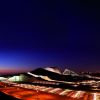- Accede I
- Regístrate I
- carrito
22. Rúa do Franco
22. Rúa do Franco

En la rúa do Franco se concentra buena parte de la oferta gastronómica del casco histórico. Sus restaurantes recogen la herencia de los primeros taberneros que se asentaron aquí para atender a los peregrinos. De hecho, los francos, entendidos bien como ‘hombres libres’ o como los extranjeros llegados de más allá de los Pirineos, dieron su nombre a esta calle.
Nuestro paseo estará escoltado por delicias del mar, como los bogavantes, nécoras, bueyes o centollos, que pueden degustarse horas después de su captura en los restaurantes de la ciudad.
También podemos observar cómo las fachadas de algunas casas aún conservan, grabados en piedra, símbolos como la concha, que las vincula a posesiones del Cabildo compostelano; el árbol –símbolo de San Martín Pinario- o las cinco estrellas del escudo de la Universidad compostelana.
Esta calle del Franco se puede considerar además epicentro histórico de la vida nocturna compostelana. De hecho, por el Franco y por su calle paralela, la Raíña, nació una hazaña conocida por varias generaciones de estudiantes como el rally París-Dakar. Nada deportivo, este recorrido nocturno se basaba en beber en cada taberna una copa de vino y contar un chiste. Recibía este nombre porque curiosamente el bar donde comenzaba se llama París y en el que acababa, Dakar.
Las rutinas noctámbulas del ocio compostelano abarcan hoy los locales de todo el casco histórico y también los del llamado Ensanche, que han quedado enlazados para siempre por los ires y venires de los trasnochadores.








